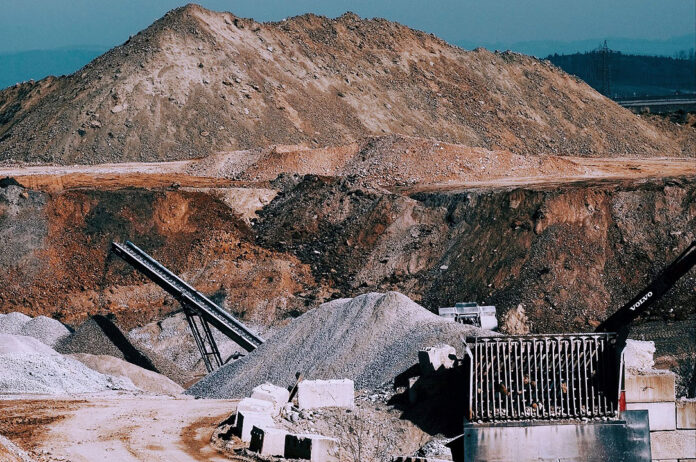THE country’s metallic mineral industry grew by 24.50% in the first half due to higher metal prices, the Mines and Geosciences Bureau (MGB) said.
In a report on Thursday, the MGB said metallic mineral production value stood at P68.63 billion in the January to June period, higher than the P55.13 billion posted a year ago.
“The telling factor for this sterling performance was the continued strong metal prices during the period,” it said.
Nickel and its products accounted for 53.44% or P36.68 billion of the total production value, followed by gold at 34.84% or P23.91 billion and copper at 10.87% or P7.46 billion. The combination of silver, iron ore, and chromite made up less than 1% or P584.75 million.
According to MGB, nickel ore production volume rose 39% to 151,646 metric tons (MT), which is valued at P21.42 billion.
Prices of nickel surged 40% year on year to $17,490.15 per MT, compared with $12,473.17 per MT recorded in 2020.
Taganito Mining Corp. was the top nickel producer with 28,935 MT, followed by Rio Tuba Nickel Mining Corp. at 25,301 MT, and Platinum Group Metals Corp. at 12,977 MT.
“Out of the 28 listed operating nickel projects, only 19 reported productions, nine or 32% were with zero production,” MGB said.
“In terms of production by province, Surigao del Norte led with 51,162 MT, followed by Palawan with 39,190 MT. Surigao del Sur took the third spot with 21,060 MT,” it added.
Meanwhile, first-half gold production volume increased by 3% to 8,545 kilograms, with an estimated value of P22.15 billion.
Average price of gold for the first half rose 9.8% to $1,808.59 per troy ounce, compared with $1,647.59 per troy ounce a year ago.
The top gold producer was Philippines Gold Processing and Refining Corp. with 3,558 kilograms, followed by Mindanao Mineral Processing and Refining Corp. with 1,268 kilograms, and FCF Minerals with 1,090 kilograms.
On the other hand, copper production volume slumped 24% to 23,557 MT, although production value increased by 4% to P7.46 billion in the first six months.
The price of copper for the period rose 65.5% to $9,094.61/MT from $5,496.36/MT.
“The P0.27 billion surge was courtesy of the upbeat price of copper during the period from $5,496.36 per metric ton in 2020 to $9,094.61 per metric ton in 2021, a substantial $3,598 increase. The positive price was partly due to supply disruptions in major producing countries like Peru and Chile,” the MGB said.
Carmen Copper Corp. contributed 75% or 17,568 MT of total production volume while the remaining 25% or 5,989 MT came from Philex Mining Corp.
Silver production volume dropped 6% to 11,069 kilograms, although the value went up 46% to P451.47 million.
Apex Mining Co., Inc. was the top silver producer, followed by Philippines Gold Processing and Refining Corp.
In a mobile phone message, Foundation for Economic Freedom (FEF) President Calixto V. Chikiamco said he expects the strong performance of the minerals industry will continue.
“I am not surprised with the result since (there) is a strong demand for minerals due to the shift to electric vehicles and demand for information technology devices,” Mr. Chikiamco said.
“I foresee a long-term boom in minerals because of these strong trends buoying demand and in the short term, shortage of supply with few projects coming online,” he added.
Moving forward, MGB said the local minerals industry is expected to be vital contributors to the national economy, especially with the reopening of the Didipio Copper-Gold Project of OceanaGold Philippines, Inc. (OGPI) in Nueva Vizcaya and the issuance of the implementing rules and regulations of Executive Order (EO) No. 130 that lifted the ban on new mineral agreements.
“The renewal of the application of OGPI was approved in July 14. This is projected to boost local copper, gold, and silver mine production,” it said.
The MGB expects gold prices to remain strong “given its safe-haven appeal to investors during these uncertain times.”
However, it noted that economic activity around the world will be hampered by the prolonged pandemic.
“Reduced economic activities would mean the demand for industrial metals like copper, iron ore, nickel, and among others being utilized by the steel, construction and other downstream industries to decline. Mineral analysts are also projecting, demand cutback from China, for these metals,” MGB said. — Revin Mikhael D. Ochave

